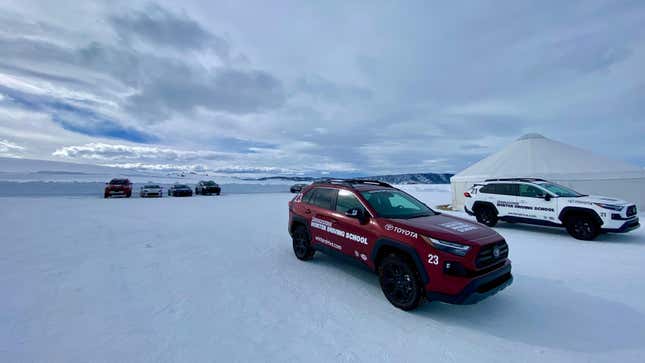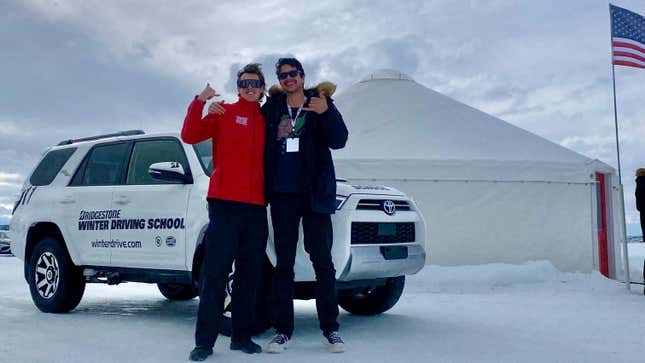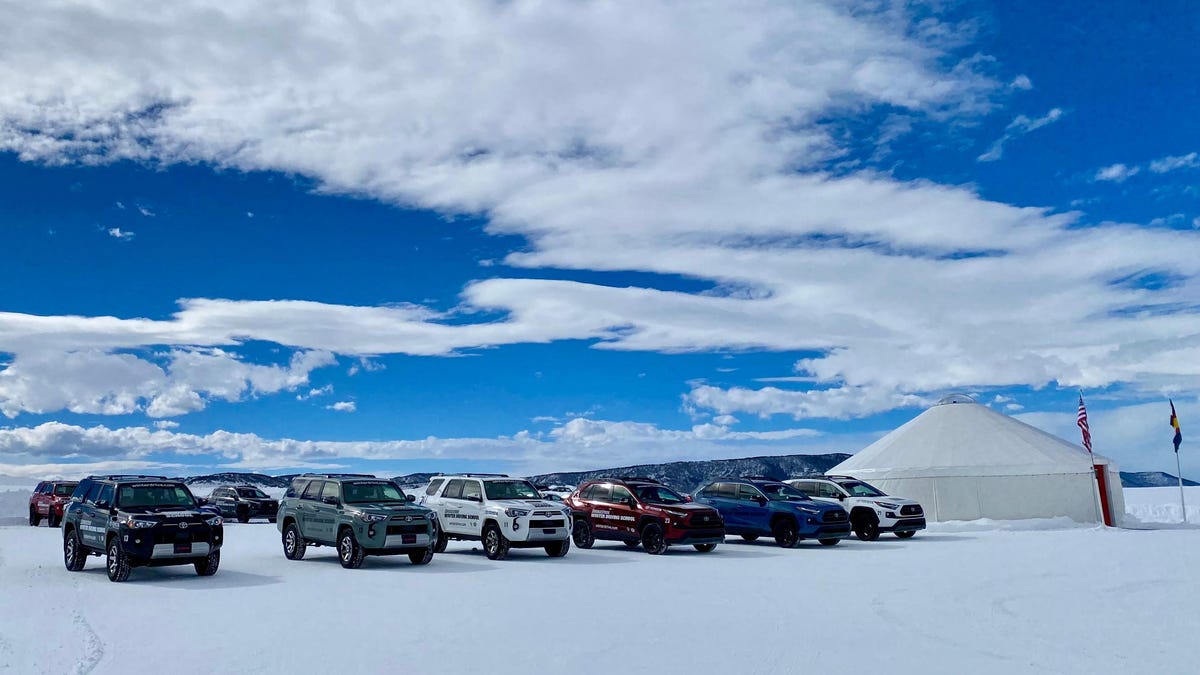I am a native Angeleno, born and raised apart from two years in Boston where I didn’t drive much, so I had never really driven on snow until I was recently invited to the Bridgestone Winter Driving School in Steamboat Springs, Colorado. Thankfully the weather was in the high 40s to low 50s during the day so I didn’t freeze to death, but this scenic little mountain town was still covered in a significant layer of snow, enough to intimidate me.
Bridgestone’s Blizzak snow tires impressed me, and somehow managed to find grip on straight up ice despite my struggle to ignore my exclusively Mediterranean climate driving experience and start listening to the wisdom being imparted upon me by my instructor. Once I did my first few runs on the course I gained a ton of confidence in the tires and was able to unclench my everything and begin to absorb some of the advice offered by my Oakley wearing, mullet wielding Yoda of snow driving, instructor Nick Strickler.

Aside from tires, I was there to learn strategies to keep me safe when driving on snowy or icy roads. I was surprised to learn a new driving line to safely navigate an icy corner; the experienced driving coaches at the Winter Driving School taught us that the fastest way to navigate an icy turn while remaining in control of the car is to exclusively brake on the straight, aim wide for the turn, release the brake then turn the wheel about half a rotation and let the tires do the work. I was surprised at how slow I had to take turns even on Bridgestone’s impressive Blizzak tires, but these corners were incredibly icy. The “apex” you’re trying to hit is remarkably late, basically once you’ve already completed the turn, but this strategy did yield the best results to mitigate understeer when entering the corner and oversteer when exiting.
I was most impressed by the grip these tires found in emergency braking scenarios. Stopping a car on ice doesn’t seem like it’d be easy, but jump on the brakes and the Blizzaks seem to bite into the ice and stop with surprising efficiency. This is a massive safety benefit, since the easiest way to avoid an accident is by stopping before impact occurs; just be sure to leave yourself a solid gap between your vehicle and the vehicle ahead of you when driving on slippery surfaces. Bridgestone even let us sample some competitor’s snow tires, which I will cover in a separate article. Just know that, at least in a test set up by Bridgestone, with their cars, instructors and track, the Blizzaks offered the best combination of lateral grip and braking performance.

I learned a few other tricks, like the importance of gentle steering and throttle inputs when driving on ice. I have primarily watched WRC races in snowy conditions where the directive is to conclude the circuit as rapidly as physically possible, so I expected more Scandinavian flicking and giant rooster tails coming off of my rear tires, but we were there to learn how to safely control our cars. After finishing my day at the Winter Driving School, I feel much more confident in my capacity to retain control of a vehicle on snow and ice, and I know I shouldn’t drive my Mini to the mountains with my summer tires and expect good results.

